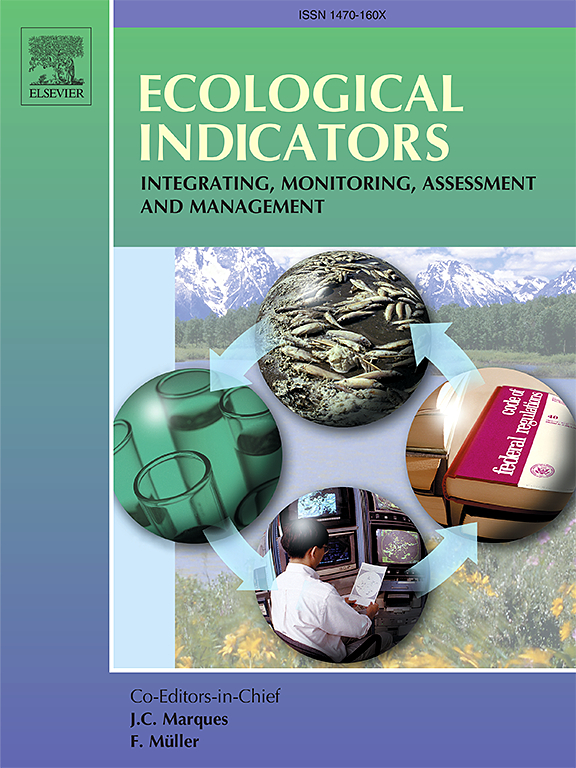The difference in ecological environmental quality impact factors between human activity zone and non-human activity zone in arid regions: A case study of the northern slope of the Tianshan Mountains
2025-02-01 null null 171(卷), null(期), (null页)
A precise understanding of the status and causal mechanisms of regional ecological environment quality (EEQ) is fundamental to ecological conservation. This is especially crucial in ecologically fragile arid regions. The unique artificial oasis and desert-mountain natural landscape units on the northern slope of the Tianshan Mountains (NSTM) have formed human activity zones (HAZ) and non-human activity zones (NHAZ) with obvious natural- human characteristics. This study, using the region as an example, constructs an improved remote sensing ecological index (IRSEI) tailored for arid regions and leverages the google earth engine (GEE) platform to analyze the spatiotemporal variations in EEQ in both HAZ and NHAZ. Innovatively, it integrates multiple analytical models to propose a comprehensive analytical framework that encompasses overall explanatory power-spatial heterogeneity-interaction relationship for the influencing factors, thereby revealing the causal mechanisms of EEQ. The results indicate that: (1) the levels of EEQ across different zones in NSTM are ordered as follows: HAZ (0.387) > Study area (0.345) > NHAZ (0.307), with the NHAZ showing a decreasing trend. Notably, 93.01 % of the significant improvement areas are distributed in the HAZ. (2) From the perspective of the overall explanatory power of factors, ecological factors have the most significant impact on EEQ, followed by climatic factors, with some human activity factors having a relatively weaker explanatory power. The interaction effects between land use intensity, ecological factors, and other factors stand out as particularly influential in explaining EEQ. (3) The spatial heterogeneity of various factors on EEQ is significant, yet there are also similar characteristics. The influence exerted by factors within the HAZ and mountainous forest belts differs significantly from that of the surrounding areas. (4) The interactive relationships among factors vary across different zones. Human activity factors have a significant positive indirect effect on the EEQ of HAZ through their impact on ecological factors, whereas in NHAZ, it is the topographic factors that exert a significant positive indirect effect on EEQ through their influence on climatic factors. This study furnishes novel perspectives and methodologies for the assessment of EEQ as well as the comprehension of its causal mechanisms within arid regions. Moreover, it supplies valuable scientific evidence to support regional ecological environment management and sustainable development.
相关推荐
- Changes in Vegetation Phenology and Water Use Efficiency Driven by Warming and Wetting in Northwest China [2025-02-01]
- Machine Learning Models Based on UAV Oblique Images Improved Above-Ground Biomass Estimation Accuracy Across Diverse Grasslands on the Qinghai-Tibetan Plateau [2025-02-01]
- Unraveling the non-linear relationship between seasonal deformation and permafrost active layer thickness [2025-02-01]
- The impact of land-use change on the ecological environment quality from the perspective of production-living-ecological space: A case study of the northern slope of Tianshan Mountains [2025-02-01]
- Glacier area change and its impact on runoff in the Manas River Basin, Northwest China from 2000 to 2020 [2025-02-01]



